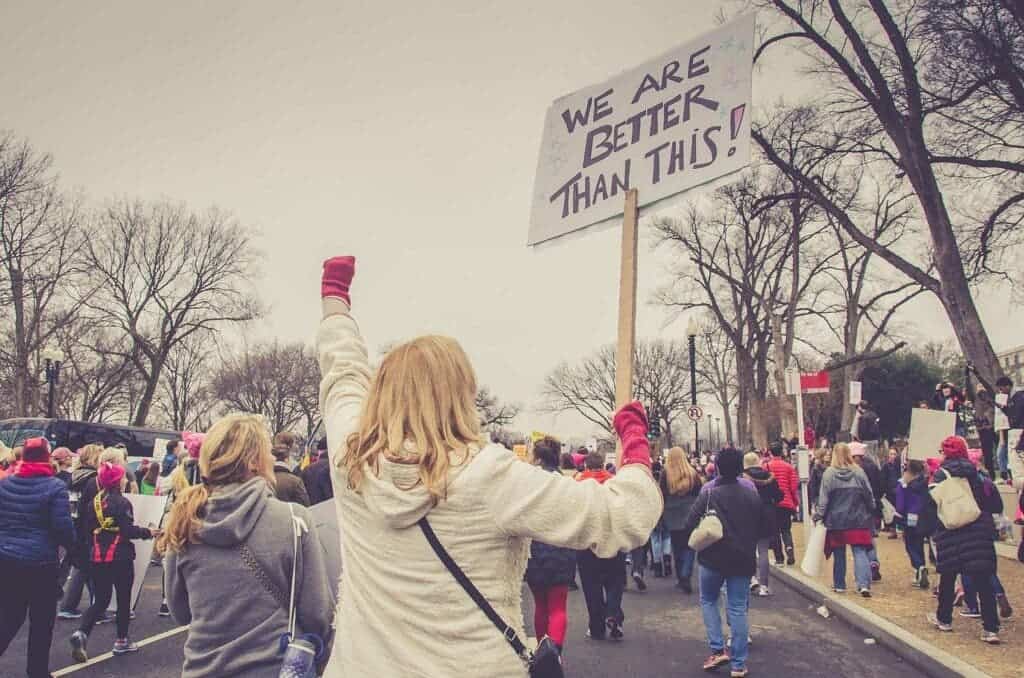The world is more politically divided today than at any point in the last five decades, according to new research.

It’s not just where you live; people across the world are more entrenched in their political views, less open to differing ones, and identify themselves more strongly with the political movement they associate with. New research led by researchers at the University of St Andrews examines the drivers behind this increase in polarization, and what we can do to bridge the gaps again.
Tightening the ranks
“We know that people have been becoming more politically polarized over time, for example in the US, but we don’t know exactly why political identity is becoming so important,” says Dr. Alexander Stewart of the School of Mathematics and Statistics at the University of St Andrews, lead author of the study. “We tried to understand this by developing a game theoretic model for the cultural evolution of party identity and comparing it to data.
“We found that if there is animosity or conflict between other types of identity groups, such as different racial groups, people will tend to shift their political identities over time to match up with their racial identity, leading to political polarization. This happens because it reduces conflict within a party. Factors such as inequality, which lead to greater animosity between identity groups, can trigger this process.”
The authors explain that populist movements — such as Brexit in the UK and the Trump campaign in the USA, — despite starting with support from ordinary citizens, over time develop strong associations with political identities and foster antagonism with opposing political movements. You’ve probably been able to see that unfolding in real-time, no matter which side of the political divide you yourself fall into.
But why does this process happen, and what drives it? The authors report that it comes down to the various social issues that fuel these movements in the first place. In the United States, for example, the Trump campaign catered to and was thus fueled, in part, racist sentiments among voters.
Addressing the rising tide of political polarization requires that we address these underlying issues first, and the greater overall issue of social inequality, the team notes. But that by itself will not be enough; the next step is for all political actors to take an active stance against these growing divisions. Those leading have to ask those that follow them to cooperate and find common ground even to those of opposing political sentiments.
The findings are based on a series of mathematical and computational models that the team — with members from the Universities of St Andrews, Princeton, and Pennsylvania — have run. These simulations examined how political attitudes and identities shifted over time in relation to growing inequality in our societies.
The results can be extrapolated to give us some insight into the rise of populist parties or movements that paint themselves as being “against the elites”, including supporters of Trump in the USA, Modi in India, Le Pen in France, Bolsonaro in Brazil, and the Brexit movement in the UK.
“We found in the US for example that racial polarization expressed by voters has declined while political polarization between Republicans and Democrats has increased, and political parties have become increasingly sorted along racial lines,” Dr. Stewart adds. “This suggests that antagonism between racial groups has shifted to become associated with political identities over time.”
The team also attempted to introduce various conditions into their simulations to test for possible ways to reduce political polarization. One of the methods they tested was wealth distribution; their conclusion was that while such measures (attempts to reduce social inequality in all its forms) can set the groundwork, they can’t take us all the way. By themselves, they are not enough to reverse polarization. In order to realistically achieve this, people need to be called to action against it, the team explains.
“To reverse polarization you must first remove the conditions that helped create it (i.e., reduce inequality) and then engage in ‘coordinated efforts’ to change attitudes e.g., signaling by political elites in the form of bipartisan cooperation or improved rhetoric about the ‘other side’,” Dr. Stewart concludes.
The paper “Inequality, identity, and partisanship: How redistribution can stem the tide of mass polarization,” has been published in the journal Proceedings of the National Academy of Sciences.


